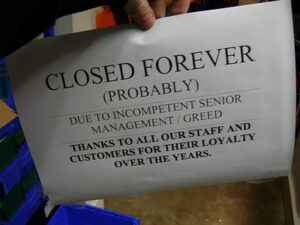Every year, the Board of Trustees receives the Capital Outlay Plan, which is required of all publicly funded Michigan higher education institutions. The plans indicate the condition of each facility on campus. As far as I can tell, this pro forma exercise does not mean much to either the Trustees or the Administration. What would be helpful for the community, is an annual strategic plan, not unlike the plan released last week by the North Carolina State Board of Community Colleges.
The strategic plan lays out the goals for the state’s 58 community colleges, and indicates how the state will achieve those goals.
For example, the state’s first goal for its community colleges is to shore up its teaching ranks. Recruiting new faculty members and retaining existing ones is the state’s top priority. Another goal is to increase student enrollment, as well as providing the support students need to persist and complete degree programs.
The plan also lays out how the state plans to achieve these goals at its community colleges. The plan includes the investment of hundreds of million dollars to ensure that institutions have the tools they need to achieve the state’s goals.
A strategic plan should be readily available to all taxpayers
A similar approach to identifying goals and outlining strategies would be nice to receive from WCC. Washtenaw County taxpayers have contributed more than $530M in property tax collections to WCC in the last 10 years. Residents haven’t received any information regarding the direction of the college, and the strategies the current administration plans to take to ensure that the college’s goals are met.
Instead, the current administration has expanded the number of executives on the payroll; reduced the number of full-time faculty; eliminated academic programs like the Culinary Arts program; eliminated services like the on-campus childcare center; blew a small fortune on a new website and then threw it away; spent $2.6M to buy out the IT staff, whom they fired and replaced with a $26M no-bid Ellucian contract; and quadrupled the cost of the Morris Lawrence Building rehab by delaying it for almost a decade.
“New” academic programs (which are largely non-degree certificates) consist almost exclusively of recombinations of existing courses. There are few authentically new expansions of the college’s academic offerings. The administration has proposed the construction of a new building on campus, the purpose of which – according to the administration – is to provide additional event space with a smattering of classrooms tossed in for aesthetics. The academic space is so utterly lacking that the building does not even have faculty offices.
So, under these circumstances, it would be nice to know what the goals of this administration are and how it intends to go about achieving them. You know, simple things that you would expect from a community college, like “increasing enrollment by X% by 2026.” Or “raising degree completions to X% by 2030.”
Accountability and oversight are both lacking
You might think that this information would be provided in the current Master Plan. Not really. The Master Plan appears to be focused on re-arranging the campus in part to make room for the “convention center” and a hotel. It contains no substantial plans to create, promote, or improve the college’s academic offerings. Or increase enrollment, or any of the other things that indicate actionable, measurable performance from a community college.
Not having a published strategic plan is a direct failure of the Board of Trustees. Their purpose is to oversee the $535-ish million dollars we’ve sent WCC in the last decade. As taxpayers, we deserve to know how they intend to spend the money we’re sending them, and what they’ve instructed the College President to accomplish.
We deserve to know what we’re getting for the tens of millions we’re providing each year.
Photo Credit: ITU Pictures , via Flickr










































